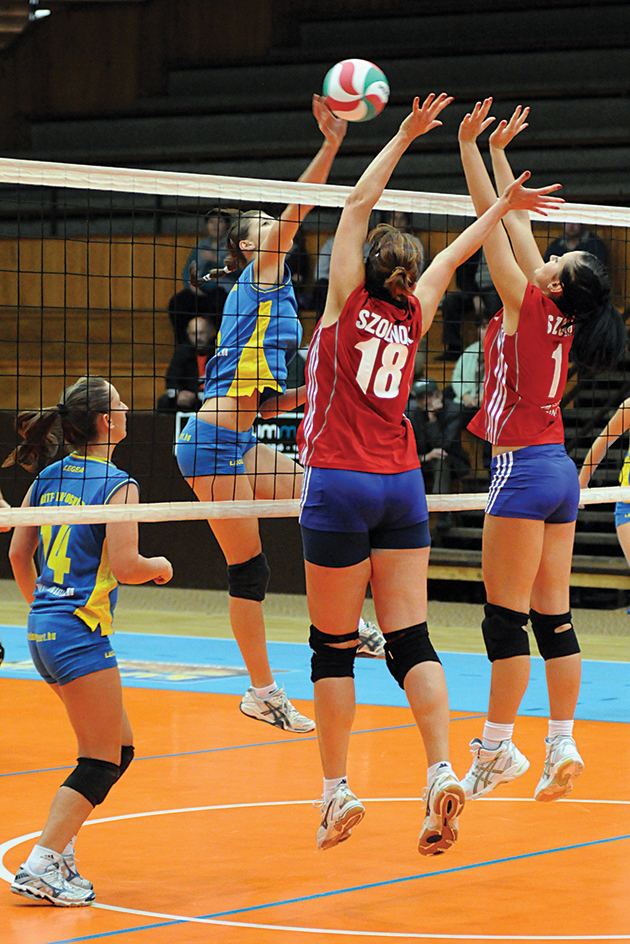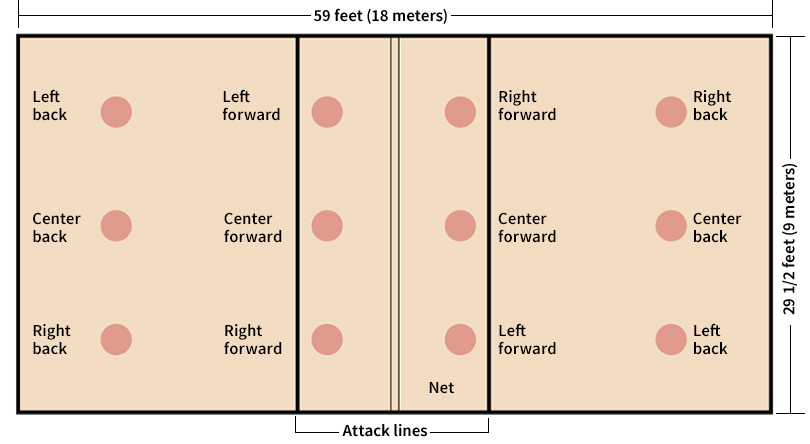Volleyball is a game in which the players hit a ball back and forth across a net with their hands, arms, or feet. It is one of the world’s most popular team sports.
There are two main forms of volleyball. Indoor volleyball is played on a court with a wooden or synthetic surface. It has six players on a team. Outdoor volleyball is played on a sand or grass court. It may have two, three, four, or six players on a team. The two forms have similar rules. This article discusses indoor volleyball.

William G. Morgan, a physical education instructor at the Young Men’s Christian Association (YMCA) in Holyoke, Massachusetts, invented volleyball in 1895. The game was originally called Mintonette. It was changed to volley ball in 1896. In 1952, the name was changed to the single word volleyball. Indoor volleyball became an official sport of the Olympic Games in 1964. About 220 national federations belong to the Fédération Internationale de Volleyball (FIVB). This organization sponsors various world tournaments. The most notable is the men’s and women’s World Championships. It is held every four years. The major annual tournament is the FIVB Grand Prix for women and the World League for men.
The ball
is round and has a leather or composite cover. It measures about 25 to 26 inches (65 to 67 centimeters) in circumference. The ball weighs about 91/2 ounces (270 grams).
The court
measures 59 feet (18 meters) long and 291/2 feet (9 meters) wide. A net suspended across the center of the court divides the court in half. The net is 7 feet 115/8 inches (2.43 meters) high for men’s games and 7 feet 41/8 inches (2.24 meters) high for women. An attack line is placed 9 feet 9 inches (3 meters) from the net and runs on either side of the net. The back row of players must attack the ball from behind this line. However, they may jump from behind the line and land in front of it.

There are six positions—right back, center back, left back, left forward, center forward, and right forward. A player called the libero can enter and exit the game as a free substitution for any player in the back row. The libero should have the best passing and defensive skills on the team and wears a different colored jersey from teammates.
Until the ball has been served to start each play, players must assume a position on the court according to the order in which they serve. Two referees and two or four linespersons serve as officials for the game.
The game
starts with the right back of the serving team serving from the service area. The right back player serves the ball by hitting it with an arm or a hand. The serve must pass over the net into the receiving team’s court. If the serve grazes the net, the receiving team must still play it. Players must return the ball by cleanly hitting it with their hands or arms. They cannot catch, lift, scoop, or throw the ball. A team may hit the ball no more than three times before sending it back over the net. If the ball is touched on a blocking attempt, that touch does not count as one of the three permitted hits.
The players on each team try to hit the ball to the floor of the other team’s court. The players leap and dive to prevent the ball from touching their floor. They also try to make it hard for the other team to return the ball. A player may try to spike the ball—that is, hit it sharply downward over the net into the opponents’ court. No player may touch the ball twice in a row unless the first touch was made in blocking an opponent’s spike.
In scoring, the rally point system is used. The FIVB approved the use of rally scoring in 1999. A point is awarded after each serve. When the serving team commits a fault, the receiving team scores a point and gains the serve. A team scores a point each time the ball touches the opposing team’s floor or that team hits the ball more than three times. A team also scores a point if the opposing team hits the ball out of bounds or commits a foul. Prior to rally scoring, matches in the United States used side out scoring, in which only the serving team can score a point.
After the serving team loses a point, the opposing team serves. But first, each of its players rotates clockwise one position. The right forward moves to the right back position, the right back becomes the center back, and so on.
Volleyball competitions are played as three- or five-game matches. The games in a match are usually called sets. In three-set matches, played by high school and club teams, the first team to win two sets wins the match. In five-set matches played by college, international, and professional teams, the first team to win three sets wins the match. In each set, the first team to score 25 points wins. The deciding set (the third or fifth set) is played to 15 points. A team must win a set by at least 2 points.
See also Beach volleyball.
